Few animals encountered over the course of human history have a superlative reputation like elephants, especially the Asian elephant (Elephas maximus). Asian elephants are the only extant species within their genus and one of 3 living species of elephants, though Asian elephants are much more closely related to mammoths than they are to African elephants (Loxodon spp.). About 4 subspecies are recognized across most of mainland Asia (E.m.indicus), Sumatra (E.m.sumatranus), Sri Lanka (E.m.maximus), and Borneo (E.m.borneensis). There are also several proposed extinct subspecies. Due to their long history of captivity amongst humans compared to their African cousins, Asian elephants had a far greater presence in written history. This species was prominently used in warfare across Asia. Asian elephants are the second-largest terrestrial animals on Earth, ranging from 2.4-2.8 meters tall and 2.7-4.4 metric tons. The largest males can exceed 3.4 meters and 7 metric tons. Amongst extant animals, they are only surpassed by African elephants. Asian elephants possess very advance neuroanatomy and are considered one of the most intelligent animals. Due to habitat loss and poaching, Asian elephants are listed as ‘Endangered’ by the IUCN. Over the past century, the Asian elephant population has declined by 50%, with the current wild population resting at around 50,000. Asian elephants are generalist mega-herbivores that can feed on over 100 plant species. Tigers are the sole natural predators of both Asian elephant adults and calves.
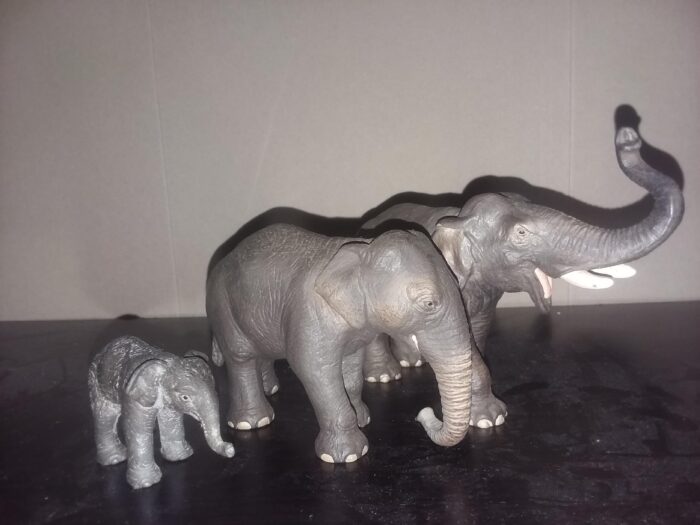
My first review of a proboscidean will of course be centered on another set of retired figures from Schleich. These figures weren’t released simultaneously as the bull was released way back in 1998, while the cow and calf were released years later in 2005. Nonetheless, they’re being reviewed as a set as they were all retired in 2012. Since then, Schleich has updated these animals twice in 2012 and 2017, though now will be the first time that any of the males will be reviewed.

The bull of this set has a shoulder height of 8.1cm, which corresponds to the 1:34 scale for an average male. The male’s face is posed with the trunk raised and the mouth opened. And right out the gate, the sculpt is just very remarkable for a figure released 23 years ago. The skin is very realistically textured and so much anatomical detail with the ears, eyes, head, and face are present and accounted for. The tusks are a modest length, though that appears to be a variable trait in male Asian elephants. The only knock I can give against this figure is that the feet are oversized. Otherwise, I can see this figure being released today, which appears to be the case as Maia and Borges is currently using this sculpt. It’s likely this figure was outsourced from that manufacturer, much like the large Schleich whales that I’ve covered before.
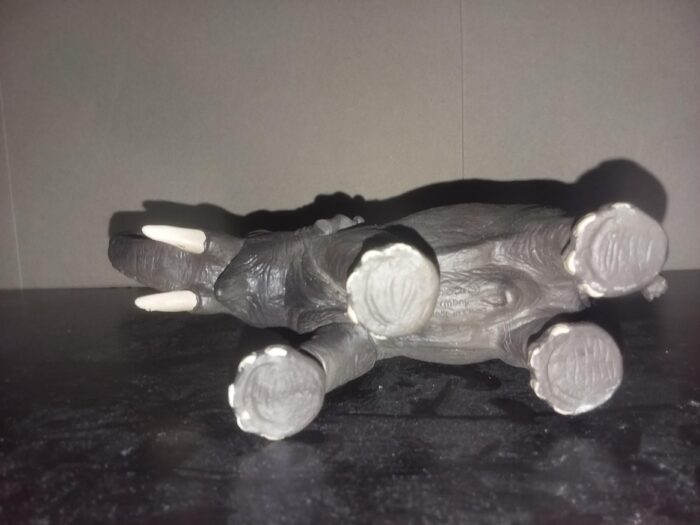
Underneath, the genital sheath can be observed, in accordance with the impressive anatomical detail discussed so far.
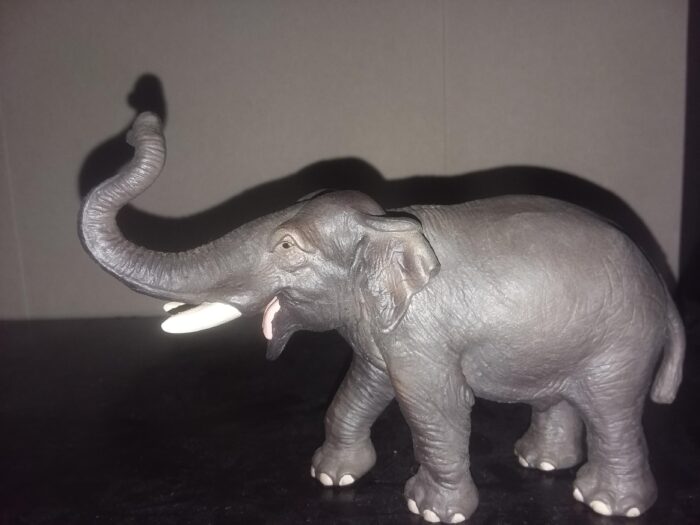
As for the paintjob, the figure is marketed as the Indian subspecies. The main observable difference between the main subspecies of Asian elephants is their pigmentation. Indian elephants possess an intermediate coloration with a moderate amount of depigmentation. From what I can tell, this seems to be accurate with the paintjob on this figure, with a shade of gray that’s darker than some of the photos of Sumatran elephants, but lighter than some Sri Lankan elephants.

Moving on, the cow has a shoulder height of 7.4 cm, which places it to a very close scale as the bull at 1:32. Pretty much all of my praise for the male’s sculpt applies to this female. The face, in particular, stuck out as looking very realistic to me.
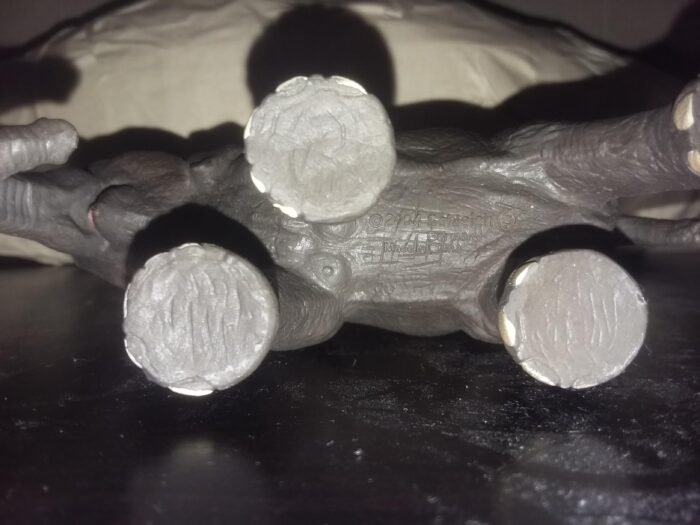
Below you can actually see sculpted teats on the chest. Even though the cow was released 7 years after the male, this is still impressive.
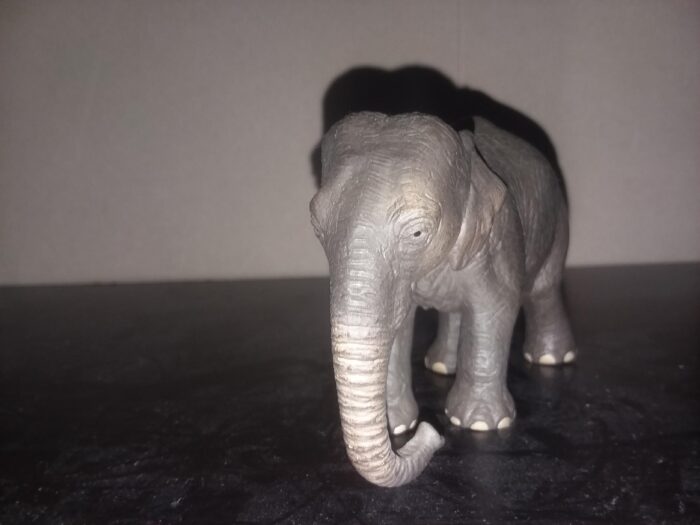
The female sports a matching paintjob to the male, while possessing a bit more depigmentation along the face and trunk.
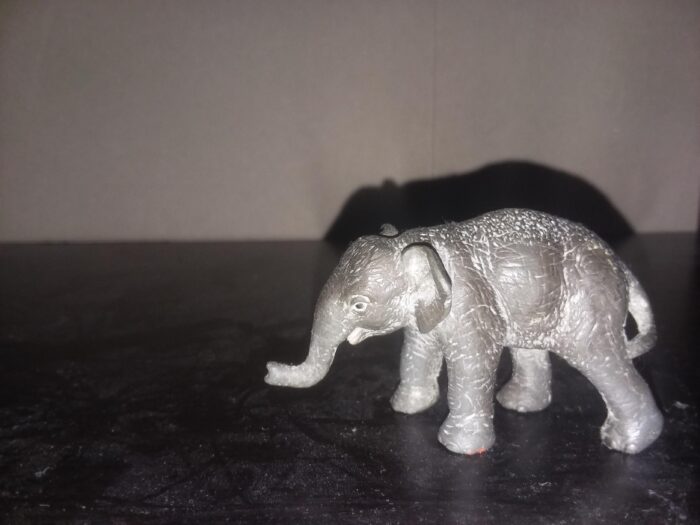
And now it’s time for the calf. The one I’m using for this review is the most worn down, as I had it the longest. The bull and cow were recently bought to replace the ones I had as a kid. When set to the same scale as the adults, the calf would be 1.3 meters, too large for a newborn. This is closer to a calf around a few months old. The sculpt is just as impressive as the adults, and even includes some texturing to represent the tufts of hair present on many calves.

While not in the best condition for judging the paintjob, enough is preserved to observe that the calf was colored the same as the adults. Probably the least detailed figure of the set, but that’s forgivable given the size.

My thoughts on the Schleich Indian elephants released from 1998-2005 very much mirror my thoughts on the 2004 Bison. It’s very much a ”Future proof” figure. Schleich’s updated figures, while still adding improvements (especially to the calf), don’t necessarily feel as big a leap when comparing the average evolution of animal figures from the late 90s/early 2000s into the current decade. For those interested in this set, the bull is luckily still in production under Maia and Borges. The cow and calf are restricted to secondhand sellers. While not rare they may go beyond their original MSRP.
Disclaimer: links to Ebay and Amazon on the AnimalToyBlog are affiliate links, so we make a small commission if you use them. Thanks for supporting us!




I think the cow is probably the best of the trio, but not bad for their era!
Agreed. If I were to try replacing any of these figures, the cow would be last.